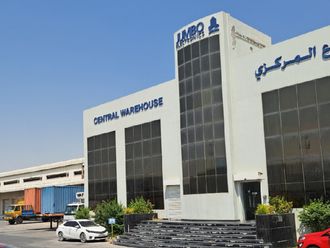Mumbai: India's leading telecom firms took a cold, hard look at the huge price they have paid to remain market players in the mobile phone revolution that has swept the country in the past decade.
The government's auction of third-generation (3G) bandwidth for cellphone services, which ended on Wednesday, saw the winning bids for 71 licences in 22 service areas soar to up to five times the original reserve price.
For the government it raised a welcome $15 billion, helping plug a yawning deficit.
For telecom firms the unexpectedly high bids reflect the importance of retaining an edge in the world's fastest growing and intensely competitive mobile market, which has more than half a billion subscribers and is adding around 20 million a month.
Whether the high licence costs will mean higher costs for consumers, slowing the spread of the technology, remains to be seen.
But India's top mobile operator, Bharti Airtel, which faces a bill of $2.6 billion for winning spectrum licences in 13 areas, was quick to criticise the cost.
"The auction format and severe spectrum shortage along with ensuing policy uncertainty drove the prices beyond reasonable levels," Bharti said in a press release. "As a result, we could not achieve our objective of a pan-India 3G footprint."
As well as the booming middle class, mobile phone penetration has changed the lives of millions of poorer Indians who never owned a landline, but now use cell phones to micro-coordinate daily activities to levels never seen before.
Consolidation
Nine of India's dozen or so mobile operators participated in the auction, but none managed to secure bandwidth in all 22 areas, with Bharti and Reliance Communication leading the pack with 13 apiece.
Some analysts predict that after the heavy hit companies have taken, smaller players may be forced out, in a round of consolidation.
Rajesh Jain, telecoms analyst with Mumbai-based Angel Broking, said the huge potential for 3G services — which allow mobile users to surf the Internet, video conference and download music, video and other content at quicker speeds — had forced the operators' hands.
"3G is a game changer. Telecom firms have no choice. They had to be in it for incremental subscriber base," Jain told AFP.
India's 2G spectrum is already over-congested and, as well as serving high-end users, the 3G spectrum will also allow operators to free up bandwidth for more voice users.
Jain said it was too early to say whether 3G services would be a profitable revenue stream.
India's telecom firms are currently struggling to stay in the black as call tariffs have plunged to below a cent a minute — the lowest in the world — with no indication yet of likely rates for 3G subscribers.
Hemant Joshi, telecom head with Deloitte India, predicted that telecoms firms would have to raise additional funds to launch services and earnings would be "subdued" in the coming quarters.
Ganesh Duvvuri, of Edelweiss Securities, agreed, forecasting in a note to clients that March 2011 earnings for Bharti may be lower by 3.5 per cent and Reliance Communications could fall by 4.5 per cent.
The hefty final bids will also prove a financial headache for state-owned telecom firms BSNL and MTNL, who were awarded 3G spectrum last year provided that they matched the final auction price.












